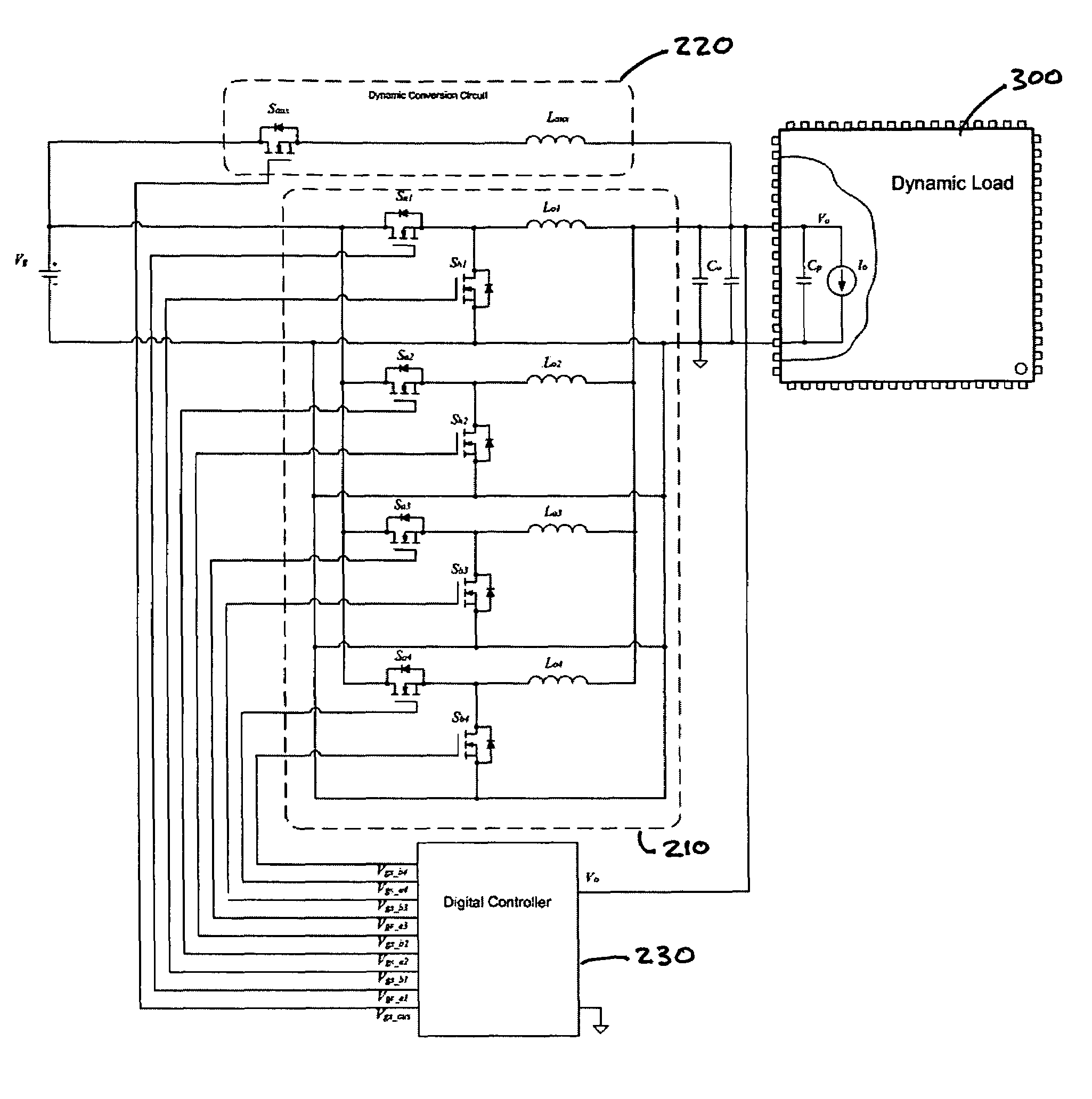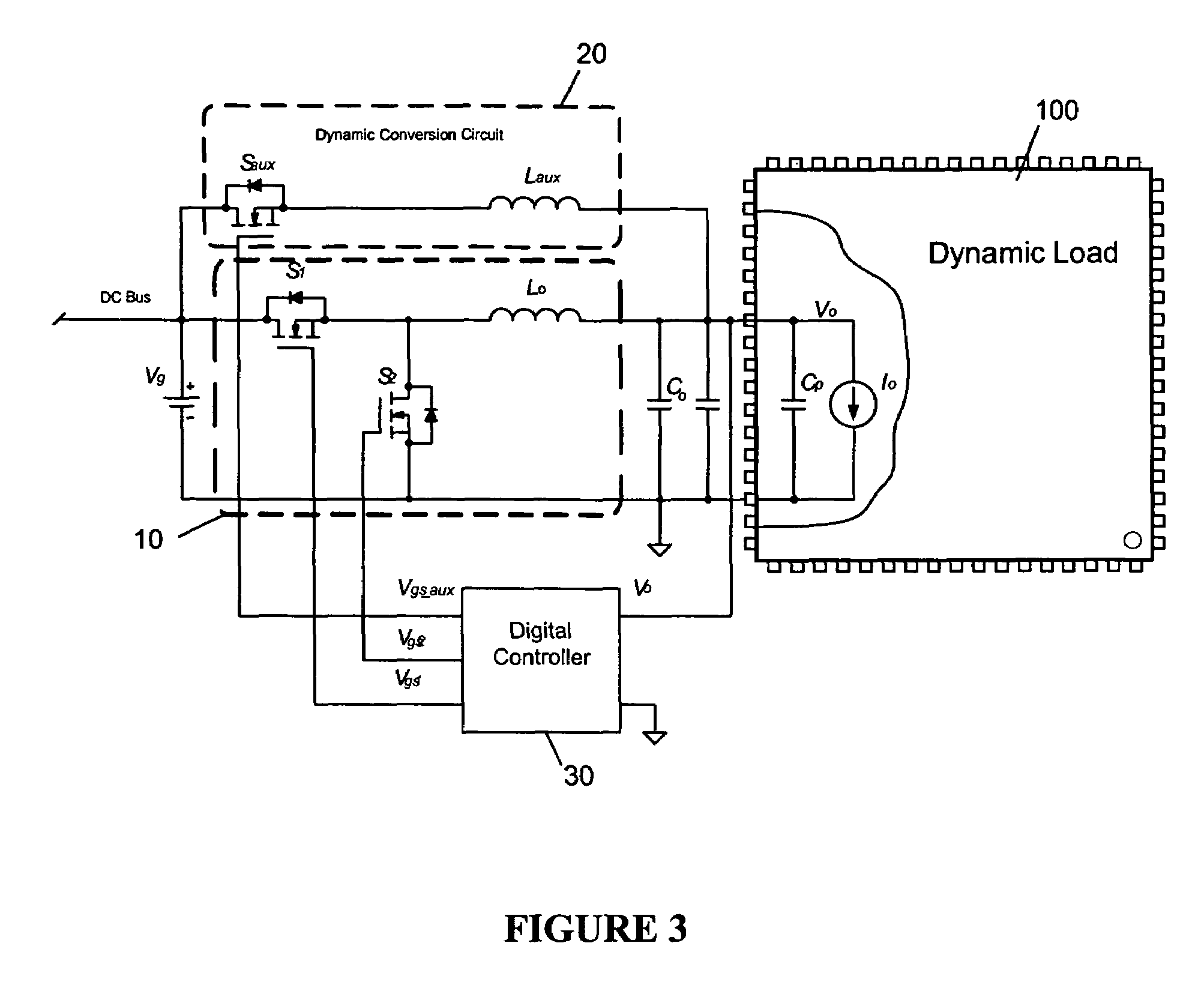Digital controller for a voltage regulator module
a voltage regulator module and digital controller technology, applied in the field of voltage regulator modules, can solve the problems of large voltage drop of vrms based on existing designs, easy overflow of output voltage regulation limits, and designs not well-suited to the harsh dynamic requirements of next-generation microprocessors
- Summary
- Abstract
- Description
- Claims
- Application Information
AI Technical Summary
Benefits of technology
Problems solved by technology
Method used
Image
Examples
example
[0075]A voltage regulator module based on a buck converter and including a digital controller as described above and a dynamic conversion circuit was simulated in PSPICE v. 9.0 and its performance evaluated with respect to a VRM based on a typical buck converter. The input and output voltages of the two VRMs was 12 Vdc and 1.5 Vdc respectively, and the switching frequency of the two circuits was 250 kHz. The rated output current was 25 A and the load transient was from 0.5 A to 25 A, at a slew rate of 1000 A / μs. The results of the simulation are shown in FIG. 11, where it can be seen that the voltage drop of the VRM of the invention was less than 10% of that of the typical VRM. According to the simulation, to avoid exceeding a 70 mV output voltage drop at a 100% load current transient (25 A), an output capacitance of only 500 μF was required. In contrast, the conventional voltage mode controlled single phase VRM needed at least 5000 μF output filter capacitance. This is an approxima...
PUM
 Login to View More
Login to View More Abstract
Description
Claims
Application Information
 Login to View More
Login to View More - R&D
- Intellectual Property
- Life Sciences
- Materials
- Tech Scout
- Unparalleled Data Quality
- Higher Quality Content
- 60% Fewer Hallucinations
Browse by: Latest US Patents, China's latest patents, Technical Efficacy Thesaurus, Application Domain, Technology Topic, Popular Technical Reports.
© 2025 PatSnap. All rights reserved.Legal|Privacy policy|Modern Slavery Act Transparency Statement|Sitemap|About US| Contact US: help@patsnap.com



